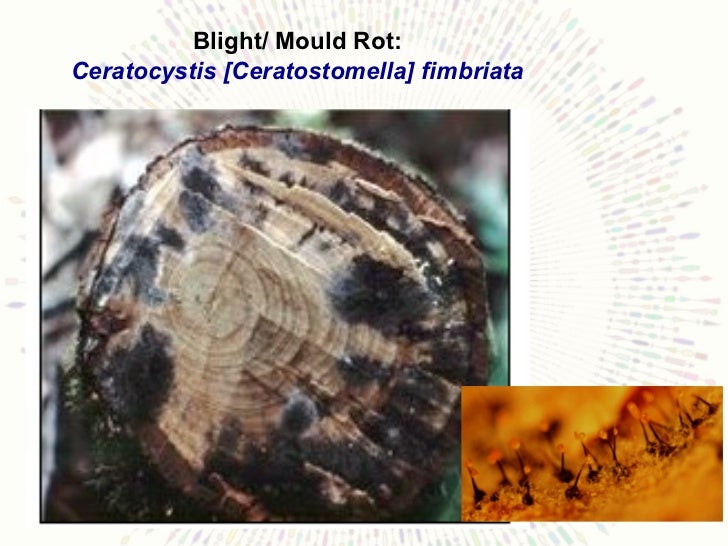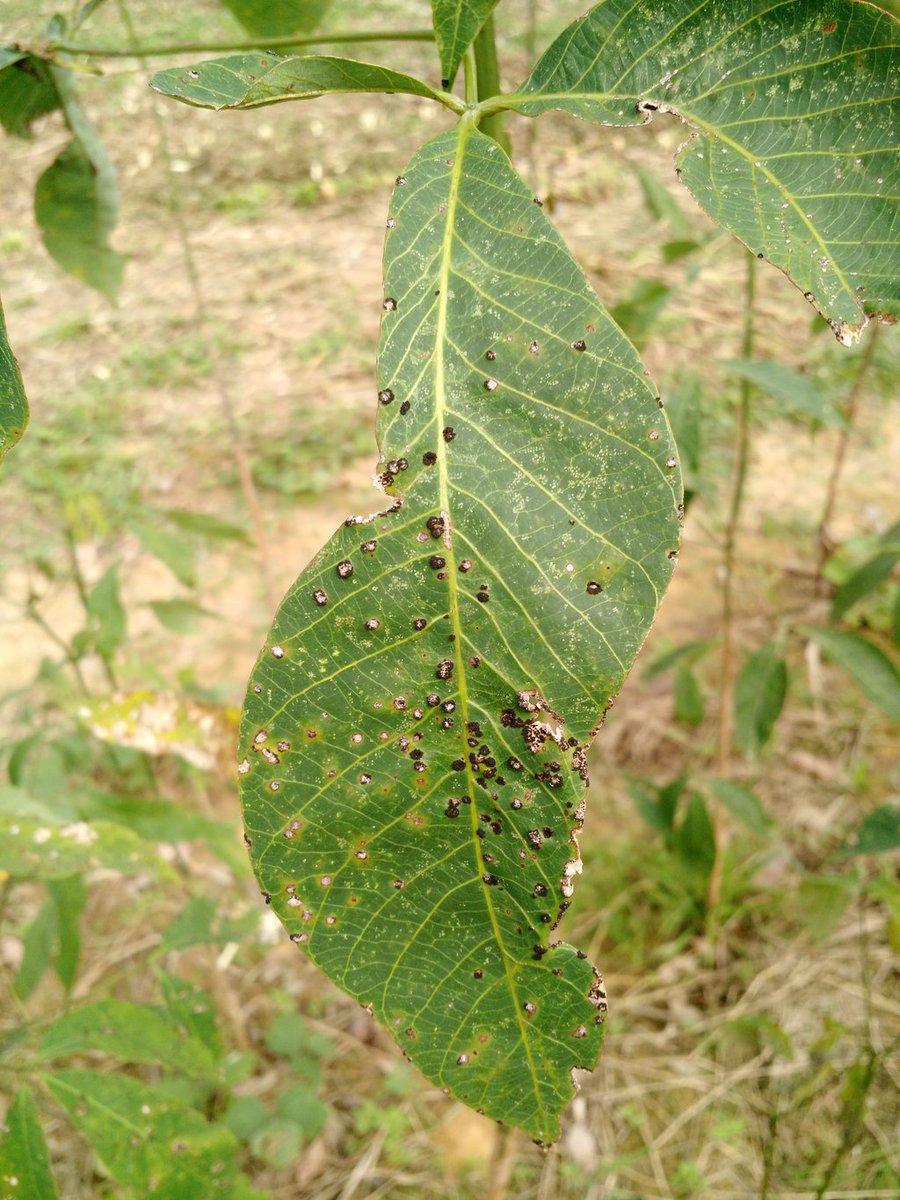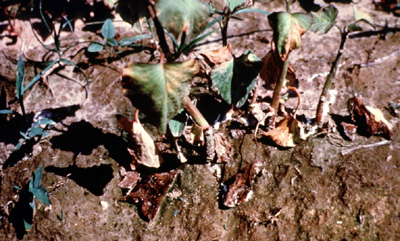Practical 5 - Higher fungi (Ascomycota)
 |
| Penicillium sp. Penicillium |
AIM
- To observe pure cultures of Penicillium sp., Chaetomium sp., Fusarium sp., and Curvularia sp.
- To examine and record the plant disease symptoms specimens caused by fungi of phylum Ascomycota
- To examine and record fungal structures from the slides displayed
- To observe the disease cycles of various Ascomycetes
INTRO
Ascomycota, also called sac fungi, a phylum of fungi (kingdom Fungi) characterized by a saclike structure, the ascus, which contains four to eight ascospores in the sexual stage.
A) FUNGAL CULTURE
PROCEDURE
Preparing slide from fungal culture Ascomycota.
- Penicillium sp., Chaetomium sp., Fusarium sp., and Curvularia sp., has been provided.
- Firstly, clean slide and cover slide were prepared.
- Inoculation needle was used to transfer fungal specimen on the slide and was sterilled with alcohol before used.
- A small drop of lactophenol were put to cover the area below cover slip.
- A slide slowly put above spirit lamp to remove trapped bubbles, concentrate and reduce moisture. Tissue paper was used for absorption if the lactophenol sip out from below the cover slip.
Preparing slide from fungal culture (Ascomycota)
 |
| Chaetomium sp. |
 |
| Fusarium sp. |
 |
| Curvularia sp. |
B) PLANT DISEASE SPECIMENS
i) Powdery mildew of rubber
- Caused by Oidium heveae
- Host : Rubber
- Infects young leaves of rubber causing massive leaf fall
- Fungus also lives on mature leaves throughout the year
 |
| Powdery mildew on rubber |
ii) False smut of padi
Class : Pyrenomycetes
Order : Clavicipitales
- Caused by Ustilaginoidea virens
- Host : Rice
- Attack flowers/grains (at the flowering stage produce)
- Symptom : yellowish green fungal growths on seeds.
- Usually caused minimal damage
 |
| False smut of paddy |
iii) Citrus scab
Class : Loculoascomycetes
- Caused by Elsinoe fawcetti
- Host : citrus
- Infects leaves, fruits and stem of citrus.
- Symptom : Corky lesions and abnormal leaf shape
 |
| Citrus scab |
iv) Leaf Blight of maize/ corn
Class : Deuteromycetes
Order : Moniliales
- Caused by Drechslera maydis (Leaf blight of corn)
- Host : corn
- Infect at every season,
- The worst damage is at seedling stage or young stage.
- Drechslera maydis infect and spread vigorously at high humidity.
- Spores spread by wind, rain.
 |
| Leaf blight of corn |
v) Sigatoka disease of banana
- Caused by Mycosphaerella musicola (telemorph) / Cercospora musae (anamorph)
- It was the first leaf spot disease to have a global impact on bananas but has since been largely displaced by black leaf streak in many banana production areas.
 |
| Sigatoka of banana |
vi) Moldy rot of rubber
- Caused by Ceratocystis fimbriata
- Infects tapping panel of rubber

vii) South American Leaf Blight (SALB) of rubber
- Caused by Microcyclus ulei
- This disease occurs only in South America and is unknown in rubber grown in Asia (Malaysia, Indonesia and Thailand)
- Quarantine is important
 |
| SALB of rubber |
vii) Sooty mould disease
- Caused by more than one fungi : Tripospermum sp., Capnodium sp., Limacinula sp.)
- Infects various crops such as fruit trees (mango, citrus, rambutan etc)
- Symptoms mainly of blackish layer of fungal growths on leaves and other plant parts
- Sooty mould is a common disease wherever honey dew or sugary subtance secreting insects, such as mango hopper, scales, coccids and mealy bugs are found.
- Disease is severe in old and dense orchards where light intensity is low, over the entire surface of twigs and leaves
 |
| Sooty mould |
ix) Black mildew
- Caused by Meliola sp.
- Similar with sooty mould disease but fungus forms scattered, blackish growths instead of layers mainly on leaves of mango and other fruit trees.
x) Blast of paddy (Penyakit Karah Padi)
Order : Deuteromycetes
Class : Moniliales
- Caused by Pyricularia oryzae (anamorph) / Magnaporthe grisea (teleomorph).
- Host : paddy
- Infects paddy causing deaths in seedlings
- Symptom : diamond shape spots on paddy leaves
- This blast disease caused plant become stunted, lessen matured paddy, decrease the weight of grain and its quality.
 |
| Blast of paddy |
xi) Brown spot of paddy (Bintik Perang)
Class : Deuteromycetes
Order : Moniliales
- Caused by Drechslera oryzae
- Host : paddy
- Symptom : rounded or circle shaped brown spots on paddy leaves (about 1 cm)
- Sometimes, too much spot causing the dry leaves.
- this disease usually spread on crops on land that has less in nutrients contents,
 |
| Brown spot of paddy |
xii) Narrow brown leaf spot of paddy (Bintik perang kecil)
Order : Deuteromycetes
Class : Moniliales
- Caused by Cercospora oryzae
- Host : paddy
- Symptom :narrow rounded or circle shaped brown spots on paddy leaves.
- Damage is about 2-10mm length, 1mm width.
- Infection wide in Asian, North America and Africa.
 |
| Narrow brown leaf spot of paddy |
xiii) Sheath blight of paddy (Hawar upih)
Class : Deuteromycetes
Order : Agonomycetales
- Caused by Rhizoctonia solani
- Host : Paddy, grasses (bermudagrass, centipedegrass)
- Factors affecting :
- high humidity
- high temperature
- high nitrogen fertilizer
- Symptom : cause blackish lesions (about 1 cm length) on leaf sheath and stems. Fungus forms sclerotia and lives under soil for several months untill 1 to 2 years depends on temperature and humidity.
 |
| Sheath blight of paddy |
xiv) Foot rot
- Caused by Sclerotium rofsii
- Infects many vegetable crops such as brinjal, chilli, tomato and groundnuts
- Causes rots at the base of stems identified by the whitish growths (rhizomorphs) of the fungus
- Fungus forms sclerotia
 |
| foot rot |
xv) Antrachnose
- Caused by different species depends on host
- Chili : Colletotrichum capsici
- French bean : C.dematium, C.truncatum
- Mango/Papaya/Rubber/Cocoa : C. gloeosporioides
- Banana : C.musae
- The fungus generally forms sunken lesions infected fruits or plant parts. Blackish acervulus of fungi are observable on such lesions
 |
| Antrachnose of chillies |
xvi) Bird eye spot of rubber
- Caused by Drechslera hevea
- Symptoms on leaves, spot appears as bird eye
xvii) Panama disease or Banana wilt
- Caused by Fusarium oxysporum f.sp. cubensis
- Major disease of banana world wide causing wilt and death of plants
- A cut banana plant stem showing rings of discoloured tissue
| Panama disease of banana |
 |
| Sacharomyces cerevesiae Unicellular, yeast cells in Class Hemiascomycetes |
 |
| Aspergillus sp. Conidia produced on sterigmata on conidial heads |
 |
| Pencillium sp. Conidia forms are phiallides which are brushlike |
Erysiphe cichoracearum
- Infects cucurbits
- Conidium (oidium) formed in chains on erect conidiophores (asexual stages)
- The sexual stage produce cleistothecium (closed ascocarps bearing the ascus and ascospores)
 |
| Erysiphe cichoracearum |
Morchella sp
- Class Discomycetes
- produce apothecium
 |
| Meliola butleri |
Class : Deuteromycetes
Order : Moniliales
 |
| Drechslera sp. Konidia berbentuk lebih besar (bujur) dan panjang Terdapat sel yang berdinding tebal |
 |
| Cercospora sp. |
Order : Melanconiales
Conodia formed within acervulus
 |
| Colletotrichum capsici (sickle shaped conidia) |
 |
| Colletotrichum capsici Konidia berbentuk bulan sabit atau lengkung sedikit terdapat struktur 'setae' |
 |
| Collettotrichum gleosporiodes Rod shaped codinia |
Order : Sphaeropsidales
Example : Septoria, Phoma, Botryodploida
 |
| Botrydiploida sp. Conidis formed with pycnidium |
D.DISEASE CYCLES








Comments
Post a Comment